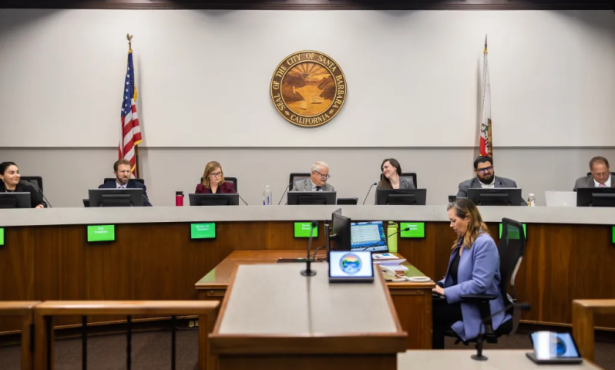What Is Money?
The Grease That Skids The Tracks of Economies
It sounds like a simple question, but like a lot of simple questions, this one gets more and more slippery as you try to pin down the answer.
One way to understand money is to ask how people would exchange goods and services without it. Before the invention of money, buying and selling was carried out by bartering, that is, by trading one good or one service for another. Although bartering is simple, it has two important disadvantages compared to using money. First, it is inflexible; second, it does not provide a great deal of incentive for people to increase their productivity. Consider the following example.
Farmer Brown lives in a town with no formal monetary system. Every year, he plants corn in the spring and harvests it in the late summer. At harvest time, he trades his corn for whatever goods and services he can find in his immediate neighborhood.

Over the years, Farmer Brown has found that there is no point growing more corn than he can use to trade at harvest time. Although many people may want his corn, only a few of them have something he wants at the time the corn is available, and, if he waits too long, the corn will spoil. If he grows extra corn, he’ll just end up throwing it away. Later, during the winter, when Farmer Brown has nothing to trade, it’s hard for him to get the supplies he needs to support his family.
Farmer Green also grows corn, but he lives in an area in which gold coins are used as money. Instead of trading his corn for goods and services, Farmer Green sells it for coins. Although most of his money comes at harvest time, he is able to save some of it to use during the winter when he has nothing to trade.
As you can see, Farmer Green’s situation is better than Farmer Brown’s because Farmer Green is able to store his wealth for as long as he wants and spend it throughout the year as he sees fit. What is less obvious is that money gives Farmer Green another, much more important advantage over Farmer Brown.
Farmer Brown’s market is limited because he can sell corn to only those people who, at harvest time, happen to have something to trade with him. As a result, Farmer Brown has no motivation to produce more than the minimum amount of corn. In fact, any effort he puts toward growing extra corn or making his business more productive is just a waste of time.
Farmer Green, on the other hand, can sell to anyone with money and, hence, has a much larger market. Thus, he has a reason to grow as much corn as the market will bear. Moreover, if he can find a way to grow extra corn, he is motivated to develop new markets. Thus, Farmer Green is rewarded for making his farm as efficient and as large as possible. As a result, he spends time developing new ways to grow, harvest, store, and distribute corn. He can also use his money to buy better equipment which allows him to farm a larger area in the same amount of time.
If Farmer Green is at all ambitious, he may — with hard work, good planning, and some luck — be able to build an enduring business that will employ other people and create wealth for him and his family. Moreover, his business will encourage the development of other businesses such as those selling farm equipment.
Because Farmer Green can sell his corn for money, he will support the building of a railway line to help him distribute his products over a larger area. Once the railway goes in, it will not only expand Farmer Green’s market, it will bring new goods to all the people who live in the area. Over time, the people in Farmer Green’s town will become wealthier than the people in Farmer Brown’s town. As a result, they will pay more taxes, which will allow the town to build roads, schools and hospitals.
Obviously, this is a simple example, and I don’t want to pretend that economics is as simple as:
Farmer + Corn + Money = Automatic Prosperity
What I want to show you is that the idea of money, which we all take for granted, is crucial to our lives because it greases the wheels of economic activity. It is true, as Farmer Brown shows us, that it is possible to buy and sell without money. (“I’ll give you 20 baskets of corn for a cow.”) However, as Farmer Green shows us, if we want to engage in large-scale commerce, we need to base it on a well-developed monetary system.
There are two reasons why money is so important to Farmer Green. First, buying and selling with gold coins is a lot more convenient than trading food for animals.
Second, money offers Farmer Green a great deal of flexibility. If he were to trade his corn for, say, cows, he would be limited as to what he could do with the cows. He could milk them, eat them, breed them, or use their hides to make leather, but not much else.
Gold coins, on the other hand, are valuable because they represent an abstract idea. When Farmer Green sells his corn for money, he has a lot of choices because other people will accept the same coins as payment when he wants to buy something.
Aside from convenience and flexibility, the coins that Farmer Green receives have another quality that makes them suitable for buying and selling: they are fungible. “Fungible” means that an item is interchangeable with an equivalent item. Money is fungible because it is the amount that is important, not the specific coins or bills.
If Farmer Green, for example, sells a certain amount of corn for ten $5 gold coins, he doesn’t really care which 10 coins he receives; for practical purposes, all $5 coins are the same (as long as they are not counterfeit). However, if Farmer Green were to sell the corn for 10 cows, it would make a big difference which cows he receives. (A large, healthy cow is a lot more valuable than a small, poorly nourished cow.) Thus, gold coins are fungible; cows are not. As such, money allows us to store purchasing power, in a way that is infinitely more valuable than having to depend on nothing but barter.
We are now ready to define “money”:
Money is an abstract, fungible medium of exchange, used for the buying and selling of goods and services.
So where did money come from?
The first coins were minted between 640 BCE and 630 BCE in the Kingdom of Lydia, a region in west-central Asia Minor on the Aegean Sea, lying within modern-day Turkey. The Lydian kings created small pieces of metal with a standardized size and weight. These pieces of metal were then stamped with an emblem that verified their worth.
The Lydian coins sparked a commercial revolution. Lydian merchants started to trade a large variety of products, and the Lydian ruling class became very rich. As a result, the Lydians were responsible for some of the most important social innovations in history including the first retail market, the first brothel (sexual services being offered to the merchants who frequented the market), as well as the first dice (now that gambling was a lot easier).
The next great money-related invention was paper money, first used in China during the T’ang dynasty (618-906 CE), a golden age of Chinese culture. The Chinese emperors, however, did not use money to expand the economy in a way that benefited the general population. Rather, they confiscated all the gold and silver and then forced their citizens to use paper money. They did so for two reasons. First, they wanted all the gold and silver for themselves. Second, by eliminating the need to transport large amounts of coins from one place to another, the emperors were able to simplify the administration of the largest empire in the history of the world. Collecting taxes, for example, became a lot easier once everyone used paper money.
In the West, paper was not even invented until 1150 (in Spain), and the debut of paper money had to wait until the German printer Johann Gutenberg invented the first printing press with moveable type around 1436. Once money could be printed, it proved to have important advantages over coins: it was cheaper to produce and a lot more convenient.
Over the years, the nature of the “abstract, fungible medium of exchange” we use has changed enormously with most of the change coming in the last several generations.
In your grandparents’ day, money was stored in a wallet or purse, in a bank vault, and recorded on paper in a ledger. Today, most of your money is stored electronically on various computers. Indeed, within the United States, about 90 percent of all the money that exists right now is not in the form of cash (coins or paper money). Instead, it is stored electronically.
This is a tremendous achievement because the more intangible the form of money, the more the money supply can be controlled. For example, when the U.S. Federal Reserve deems it necessary to manipulate the money supply, it is not uncommon for them to create or destroy several billion dollars at a time, sometimes on a daily basis. (That, however, is a story for another time.)
Earlier, I said that the way to understand money is to ask how people would exchange goods and services without it. Can you imagine living in a world in which we didn’t have computers to store and manipulate our medium of exchange? Close your eyes and think about it for a few minutes.
Now you understand money.



